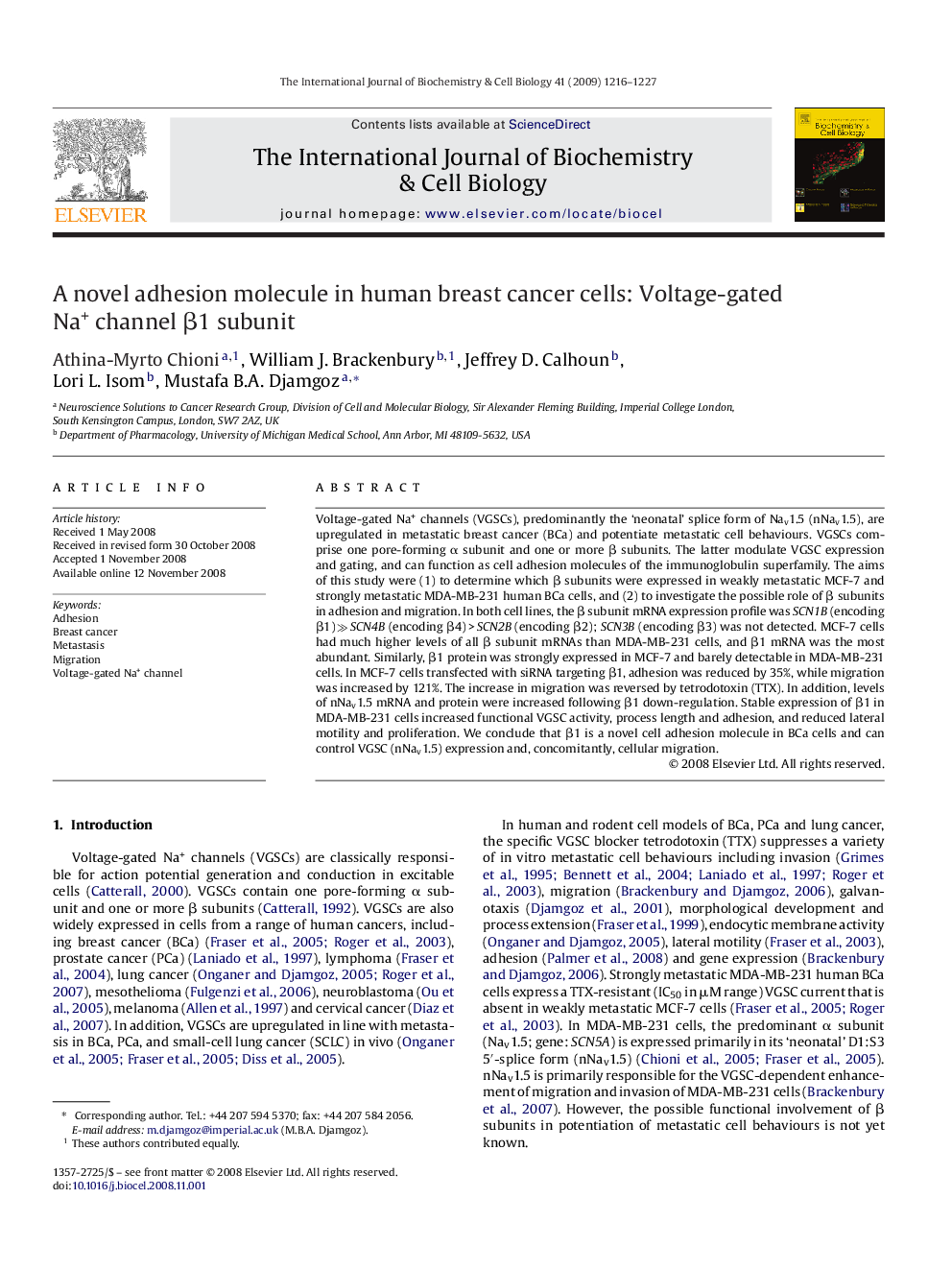| Article ID | Journal | Published Year | Pages | File Type |
|---|---|---|---|---|
| 1985109 | The International Journal of Biochemistry & Cell Biology | 2009 | 12 Pages |
Voltage-gated Na+ channels (VGSCs), predominantly the ‘neonatal’ splice form of Nav1.5 (nNav1.5), are upregulated in metastatic breast cancer (BCa) and potentiate metastatic cell behaviours. VGSCs comprise one pore-forming α subunit and one or more β subunits. The latter modulate VGSC expression and gating, and can function as cell adhesion molecules of the immunoglobulin superfamily. The aims of this study were (1) to determine which β subunits were expressed in weakly metastatic MCF-7 and strongly metastatic MDA-MB-231 human BCa cells, and (2) to investigate the possible role of β subunits in adhesion and migration. In both cell lines, the β subunit mRNA expression profile was SCN1B (encoding β1) ≫ SCN4B (encoding β4) > SCN2B (encoding β2); SCN3B (encoding β3) was not detected. MCF-7 cells had much higher levels of all β subunit mRNAs than MDA-MB-231 cells, and β1 mRNA was the most abundant. Similarly, β1 protein was strongly expressed in MCF-7 and barely detectable in MDA-MB-231 cells. In MCF-7 cells transfected with siRNA targeting β1, adhesion was reduced by 35%, while migration was increased by 121%. The increase in migration was reversed by tetrodotoxin (TTX). In addition, levels of nNav1.5 mRNA and protein were increased following β1 down-regulation. Stable expression of β1 in MDA-MB-231 cells increased functional VGSC activity, process length and adhesion, and reduced lateral motility and proliferation. We conclude that β1 is a novel cell adhesion molecule in BCa cells and can control VGSC (nNav1.5) expression and, concomitantly, cellular migration.
